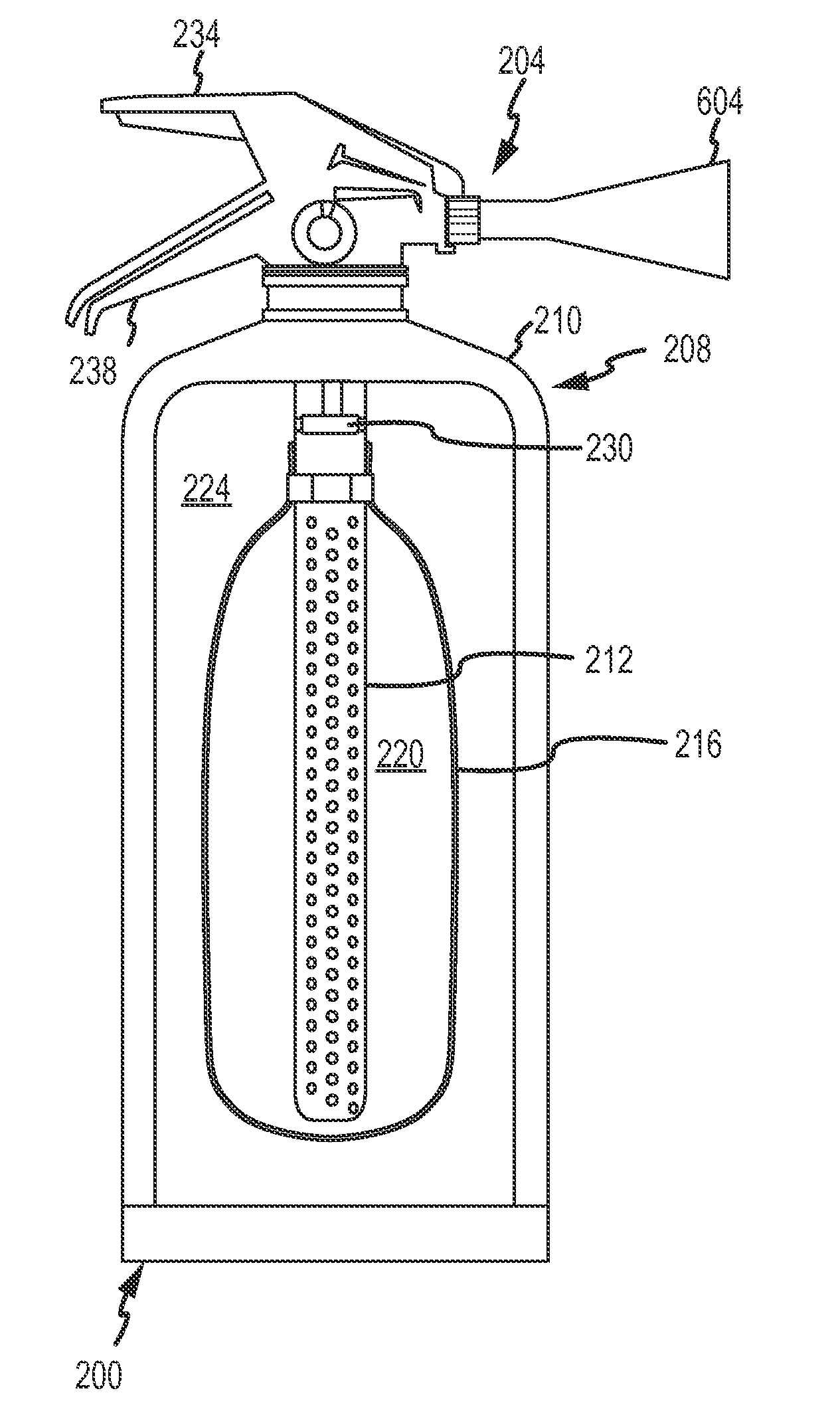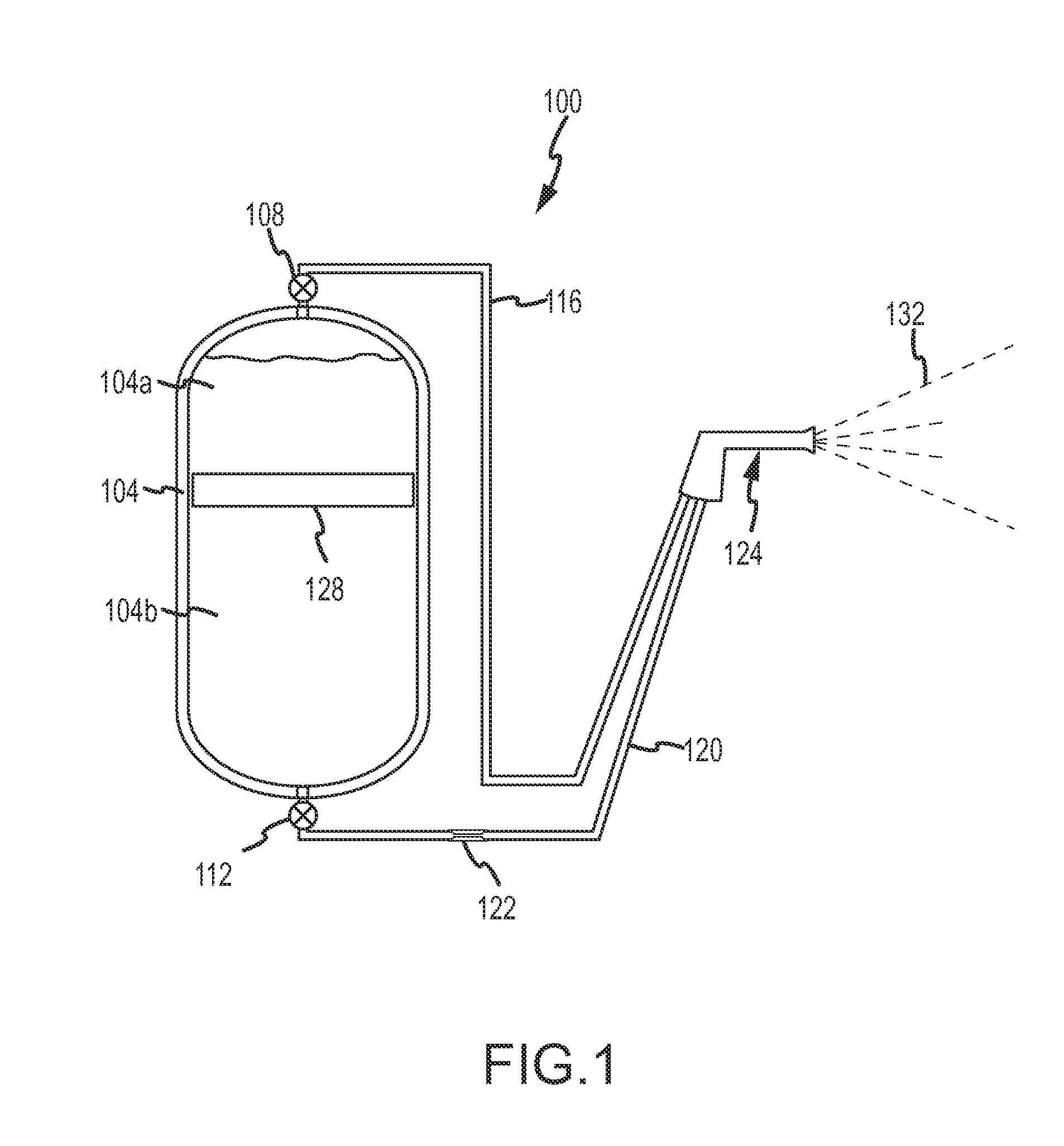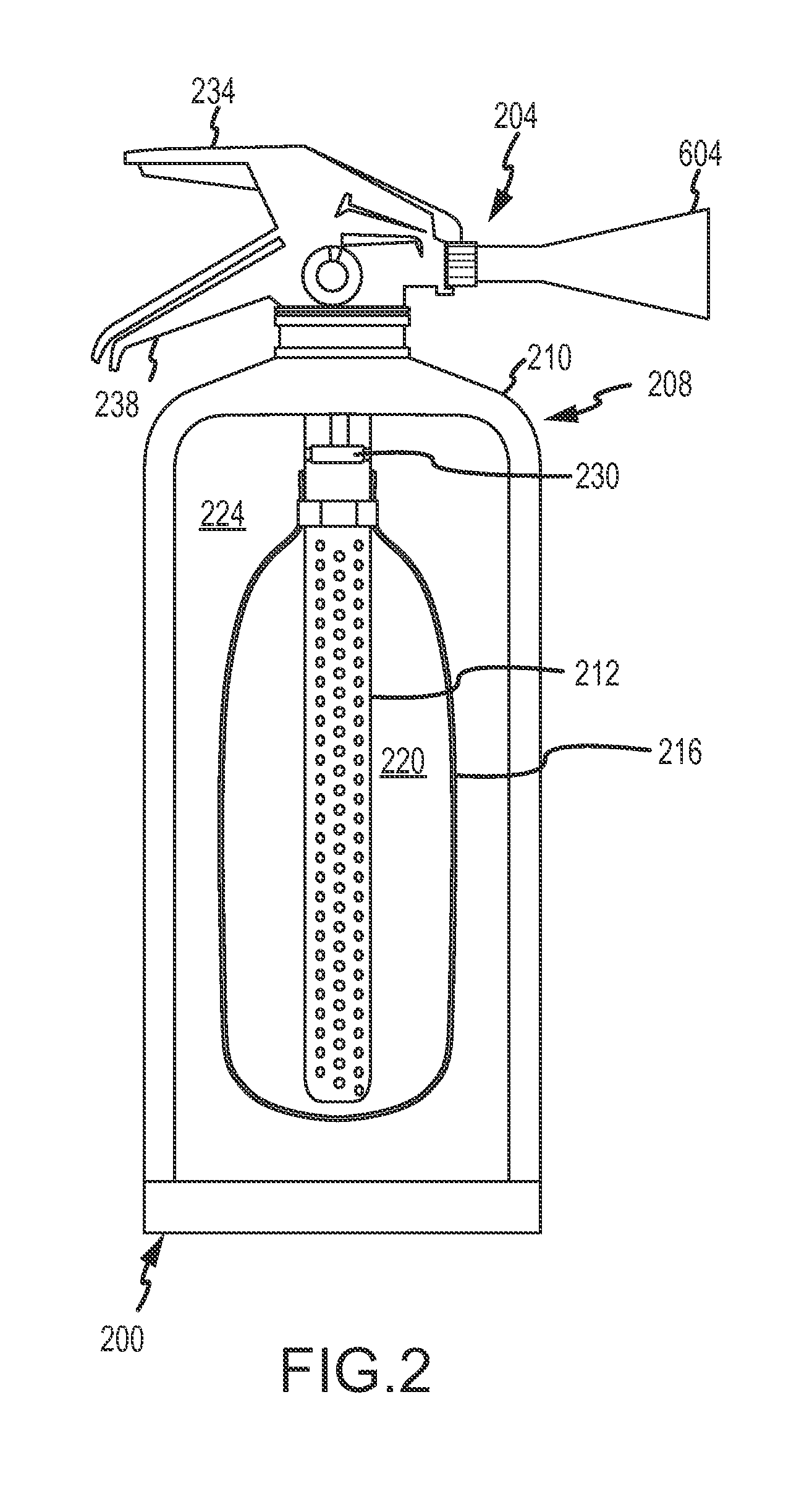Fine water mist multiple orientation discharge fire extinguisher
a fire extinguisher and fine water mist technology, applied in fire rescue, medical science, dental surgery, etc., can solve problems such as loss of fire protection, and achieve the effects of facilitating the generation of fine water mist droplets, reducing weight, and simplifying mounting
- Summary
- Abstract
- Description
- Claims
- Application Information
AI Technical Summary
Benefits of technology
Problems solved by technology
Method used
Image
Examples
first embodiment
[0040]FIG. 1 depicts an extinguisher 100 according to a The extinguisher 100 includes a containment vessel 104, first and second valves 108 and 112, respectively, first and second flexible hoses 116 and 120, pressure control 122 (optional) (which controls the liquid pressure in the second hose 120), and a hand-held nozzle assembly 124. The containment vessel 104 is rigid and pressure resistant and includes a movable (rigid) piston 128 positioned between upper and lower portions 104a and b of the vessel 104. The upper portion 104a of the vessel includes a carrier gas while the lower portion 104b includes a suppression liquid; therefore, the piston spatially defines the liquid / gas interface.
[0041]The first and second valves 108 and 112 are closed when the extinguisher is not in operation and opened when in operation. When the valves are opened, the pressure of the gas and gravity cause the piston to move downwardly, expelling liquid through the hose 120. To make this possible, the ga...
second embodiment
[0055]An extinguisher is shown in FIG. 2.
[0056]The extinguisher 200 includes a nozzle assembly 204 and a containment vessel assembly 208. The vessel assembly 208 includes a containment vessel 210, a perforated flow tube 212, and an elastomeric membrane or bladder 216 surrounding and enclosing fully the flow tube 212. The membrane 216 divides the inner volume of the vessel 210 into a first (inner) region 220 containing the suppression liquid and a second (outer) region 224 containing the carrier gas.
[0057]The vessel assembly 208 can include a piston valve 230 to actuate liquid and gas flow through the upper portion of the tube 212, and the nozzle assembly a mixing and atomization device (not shown) in communication with the tube 212 and located at the top of the tank. The piston valve is actuated by movement of one or both of the handles 234 and 238.
[0058]The bladder can be any elastic and / or elastomeric material. Preferably, the bladder has a durometer between about 75 Shore 00 to ...
third embodiment
[0072]The operation of the extinguisher of the third embodiment will now be discussed with reference to FIGS. 2-8.
[0073]An operator activates the extinguisher by gripping and squeezing the upper and lower handles 612 and 616 to move the upper handle towards the lower handle. In response, the bearing member 624 displaces the manual release valve 628 inwardly along the first passageway 400, bringing the ports 500a-d into fluid communication with the annulus 504. When not in operation, the liquid flows through the tube 212 and into the second passageway 404. Liquid flow into the third passageway 408 is blocked by the closed check valve 720 and flow through the proximal portions 532 and 536 of the first passageway is blocked by the valve portion 420. This is so because the ports are not in fluid communication with the annulus 504. When the valve 628 is displaced inwardly along the first passageway, the ports 500a-d move into the annulus 504. This displacement into the annulus 504 effect...
PUM
 Login to View More
Login to View More Abstract
Description
Claims
Application Information
 Login to View More
Login to View More - R&D
- Intellectual Property
- Life Sciences
- Materials
- Tech Scout
- Unparalleled Data Quality
- Higher Quality Content
- 60% Fewer Hallucinations
Browse by: Latest US Patents, China's latest patents, Technical Efficacy Thesaurus, Application Domain, Technology Topic, Popular Technical Reports.
© 2025 PatSnap. All rights reserved.Legal|Privacy policy|Modern Slavery Act Transparency Statement|Sitemap|About US| Contact US: help@patsnap.com



